Disclosure: This article contains affiliate links. We may earn a commission from purchases at no extra cost to you, which helps our travel content.
There's something about small capitals that speaks to my soul. Perhaps it's the way they balance official grandeur with intimate community spaces, creating a visual dialogue between power and everyday life. Montpelier, Vermont – America's smallest state capital with just 8,000 residents – exemplifies this beautiful contradiction. After documenting monastery architecture across three continents, I found myself drawn to this pocket-sized political hub during peak foliage season, camera bag slung over my shoulder and a map of the Winooski River Valley spread across my rental car's dashboard.
The Golden Capitol: Morning Light Techniques
The Vermont State House with its distinctive gold dome isn't just the postcard image of Montpelier – it's a photographer's morning meditation spot. I arrived at 6:45am on a crisp October morning, when the rising sun bathes the neoclassical building in warm amber light that perfectly complements the autumn foliage surrounding it. The dome, coated in 23.75-karat gold leaf, becomes almost luminous against the backdrop of State Street's historic buildings.
For the technically-minded: this is when your graduated neutral density filters earn their keep. I used my filter set to balance the bright dome against the still-shadowed entrance columns. The contrast between the building's formal symmetry and the organic shapes of the maple trees creates a composition that speaks to Vermont's blend of order and wilderness.
Don't rush this location. The light changes dramatically over a 90-minute period, transforming from cool blue dawn to warm golden morning. Each phase offers different compositional opportunities, from silhouettes to detailed architectural studies.
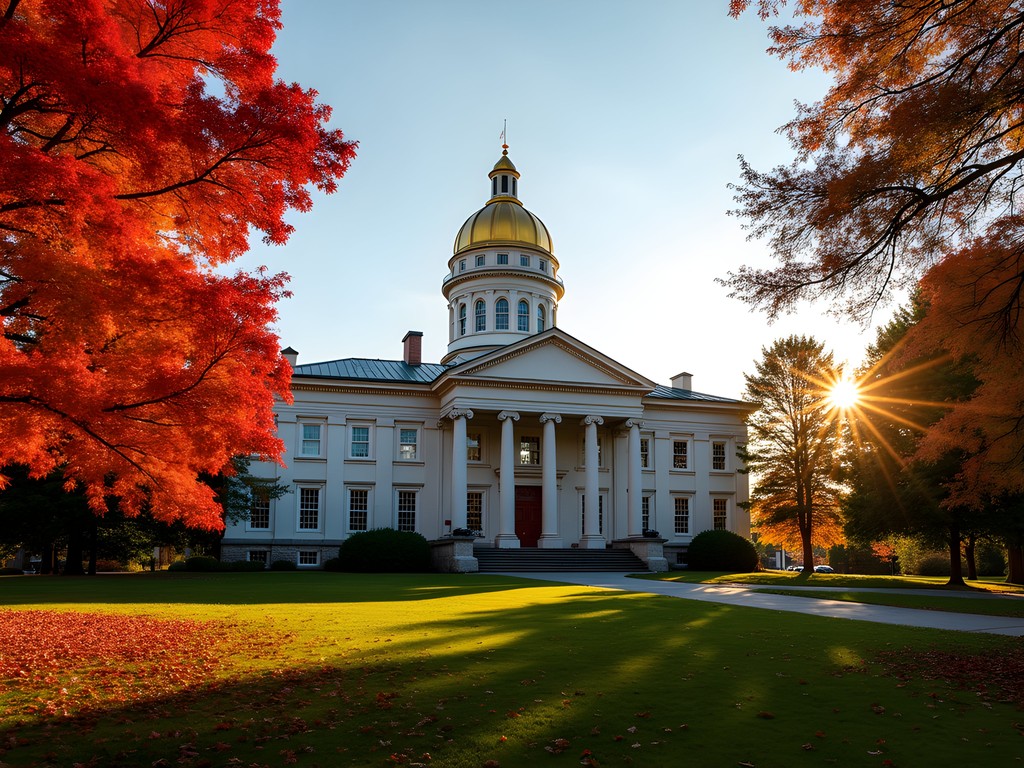
💡 Pro Tips
- Arrive 20 minutes before sunrise to catch blue hour transitions
- Use a 24-70mm lens for versatility as the light changes
- Include human elements (like early morning government workers) for scale and storytelling
River Reflections: The Winooski's Hidden Angles
The Winooski River curves through Montpelier like a liquid mirror, offering reflective compositions that double the impact of Vermont's famous fall colors. Most tourists photograph from the obvious spots along State Street, but venture just 10 minutes on foot to Langdon Street Bridge for a perspective that balances urban elements with nature.
I spent a full afternoon exploring the riverside path that locals call the 'Siboinebi Path' (Abenaki for 'river path'). The section behind the Hunger Mountain Co-op provides uninterrupted views where riverside trees create perfect symmetry in still water. For these reflection shots, I always pack my polarizing filter to control the intensity of reflections and boost those autumn colors.
Mid-afternoon brings challenges with harsh contrast, but by 4pm in October, the light softens considerably. This is when patience rewards you – wait for moments when passing clouds diffuse the light, creating a natural softbox effect over the river valley. These fleeting minutes produce the most balanced exposures of Montpelier's riverscape.
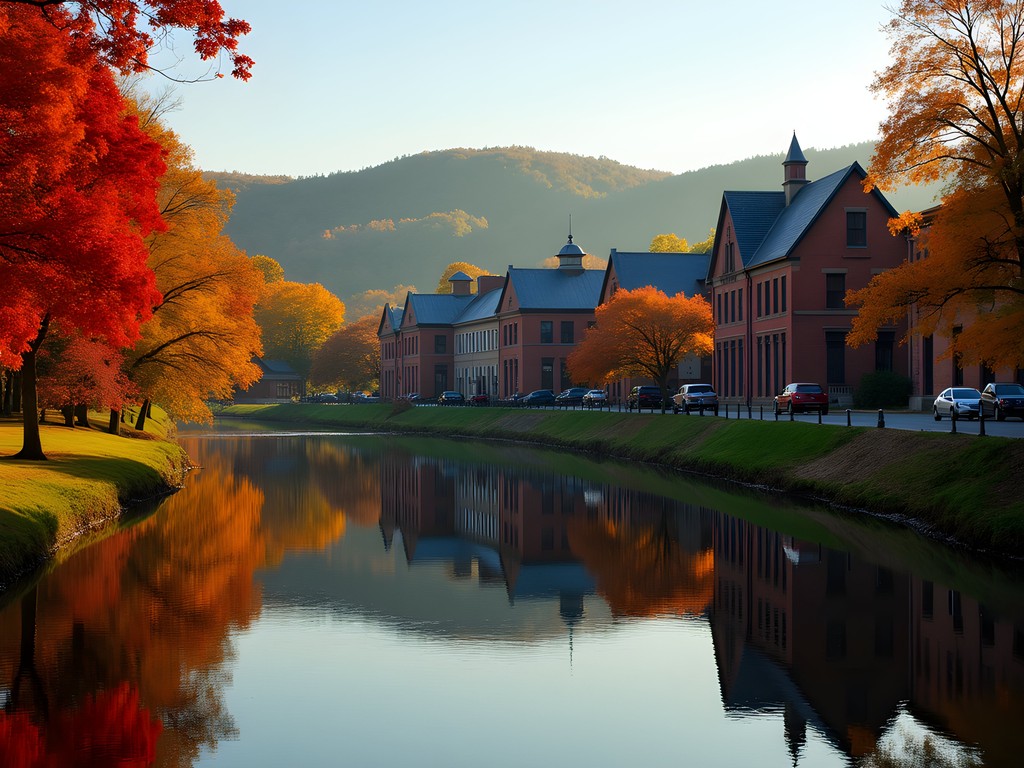
💡 Pro Tips
- Use a polarizing filter at a 90-degree angle to the sun for maximum reflection control
- Include both natural and architectural elements in river reflection shots
- Visit after light rain for the clearest water and most vibrant reflections
Architectural Details: Beyond the Obvious Shots
Montpelier's compact downtown is a treasure trove of 18th and 19th-century architectural details that tell America's story through brick, stone, and woodwork. While most visitors photograph entire facades, I've found that isolating architectural elements yields more compelling images with a timeless quality.
The Pavilion Building's ornate window frames, the Vermont History Museum's copper downspouts darkened with verdigris, and the intricate doorways along State Street all reward close inspection. For these detail shots, I rely on my macro lens which reveals textures invisible to the casual observer.
One particularly photogenic spot is the Christ Church Episcopal's stone tracery, especially when backlit during late afternoon. The contrast between rough-hewn granite and delicate pattern work creates compositions reminiscent of European ecclesiastical architecture – a perfect continuation of my monastery documentation project.
Don't overlook Montpelier's hidden alleys. Langdon Street's brick passageways feature weathered doorways and windows that frame glimpses of the surrounding hills. These compressed urban landscapes tell the story of a capital city that never lost its small-town soul.

💡 Pro Tips
- Look for contrasting textures between different building materials
- Use a longer lens (70-200mm) to compress and isolate architectural details
- Visit the Vermont College of Fine Arts campus for less-photographed but equally impressive historic structures
Culinary Culture: Capturing Vermont's Food Scene
Montpelier may be small, but its food scene punches well above its weight – and offers rich visual storytelling opportunities beyond landscape and architecture. As someone who's photographed in 47 countries, I've developed a deep appreciation for how food photography reveals cultural identity. In Montpelier, that identity is firmly rooted in farm-to-table authenticity.
The Capital City Farmers Market (Saturday mornings, year-round) provides a kaleidoscope of visual opportunities: gnarled hands of farmers arranging heirloom vegetables, steam rising from fresh bread, and the vibrant chaos of community commerce. For these documentary-style shots, I switch to my prime lens which excels in variable lighting conditions and allows me to work unobtrusively.
For indoor food photography, Montpelier's cafés and restaurants offer compelling visual narratives. The lighting at Bohemian Bakery creates dramatic shadows across their artisanal pastries, while Three Penny Taproom's rustic interior provides a perfect backdrop for documenting Vermont's craft beer culture. Don't miss the cheese counter at Hunger Mountain Co-op – a study in texture and form that tells the story of Vermont's dairy heritage.
When photographing food, I always carry my reflector to bounce available light and create more dimension in these intimate indoor settings.

💡 Pro Tips
- Ask permission before photographing vendors or their products at markets
- Use window light in cafés – position yourself so food is illuminated from the side
- Include human elements (hands, tools, preparation) to tell the complete food story
Night Photography: Small Town Americana After Dark
As daylight fades, Montpelier transforms into a canvas of warm lights and deep shadows that evoke Edward Hopper's paintings of small-town America. The limited light pollution (a benefit of being America's smallest capital) means you can capture both the intimate downtown illumination and, on clear nights, stars above the capitol dome.
The intersection of State and Main Streets offers classic Americana night compositions, with the illuminated storefronts reflecting on wet pavement after evening rain. For these night urban landscapes, I set up my travel tripod and use long exposures (typically 8-15 seconds at f/8, ISO 200) to capture the glow of shop windows and street lamps.
For something uniquely Vermont, head to the Langdon Street Bridge around 7-8pm when restaurants are bustling. The string lights over outdoor dining areas create bokeh effects when shot with a wide aperture, while the historic buildings provide a timeless backdrop. During my October visit, the combination of early evening darkness and restaurant activity created a perfect balance for blue hour photography.
One technical challenge in Montpelier's night photography is the mix of lighting temperatures – from warm sodium street lamps to cool LED storefront lighting. I always carry my color checker to create custom white balance profiles for these complex lighting environments.
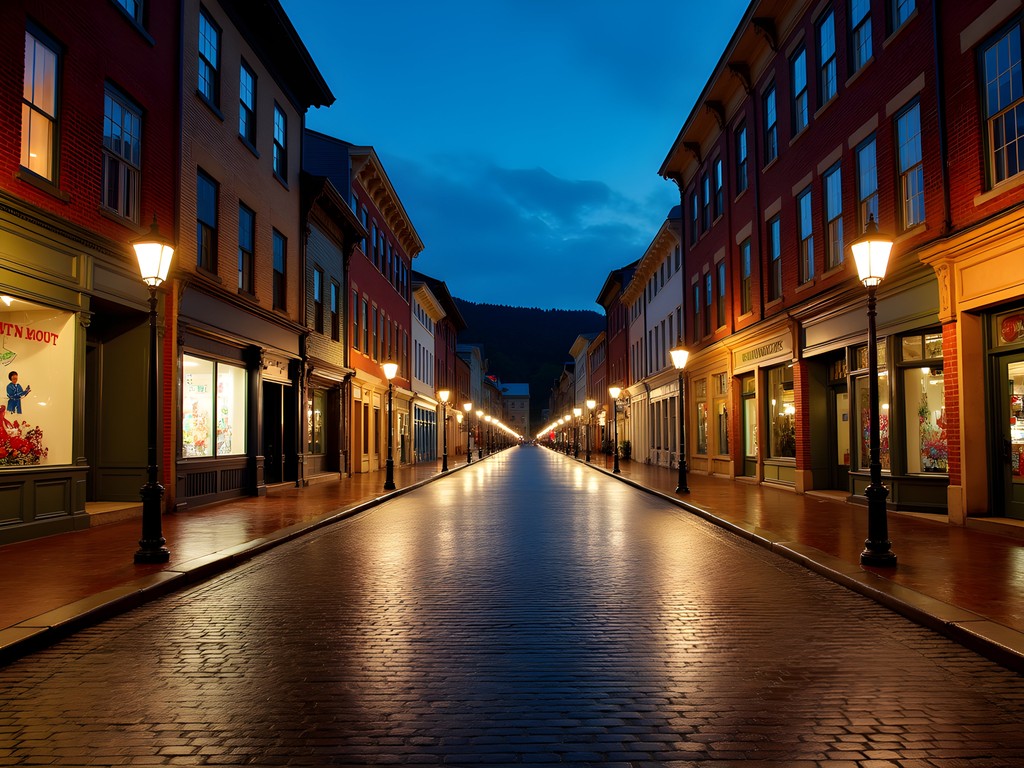
💡 Pro Tips
- Arrive during blue hour (about 30 minutes after sunset) for the best balance between ambient and artificial light
- Use bulb mode for exposures longer than 30 seconds when capturing star trails above the capitol
- Bring a remote shutter release to avoid camera shake during long exposures
Final Thoughts
Montpelier reminded me why I fell in love with photography in the first place – it's not about capturing the grandest vistas or the most exotic locations, but about finding visual poetry in places others might overlook. This tiny capital, nestled in Vermont's rolling hills, offers an intimacy rarely found in government centers. Its scale allows photographers to deeply explore the relationship between natural and built environments within a single weekend.
As I packed my gear on my final morning, watching mist rise from the Winooski River while the capitol dome caught first light, I realized Montpelier had taught me to slow down. In our rush to document the spectacular, we often miss the subtle narratives unfolding in small-town America. Whether you're a seasoned architectural photographer or simply someone who appreciates the visual rhythm of a well-preserved New England town, Montpelier offers endless compositions waiting to be discovered. Just remember to look beyond the obvious postcard shots – the real magic of Montpelier reveals itself in details, in changing light, and in the authentic moments that unfold in America's smallest capital.
✨ Key Takeaways
- Montpelier offers exceptional photography opportunities in a compact, walkable downtown
- Early morning and late afternoon provide the best light for capturing the capitol building and river reflections
- Look beyond obvious shots to find architectural details and cultural moments that tell Vermont's story
📋 Practical Information
Best Time to Visit
Late September to mid-October for peak fall foliage
Budget Estimate
$150-250/day including accommodations and meals
Recommended Duration
2-3 days
Difficulty Level
Moderate

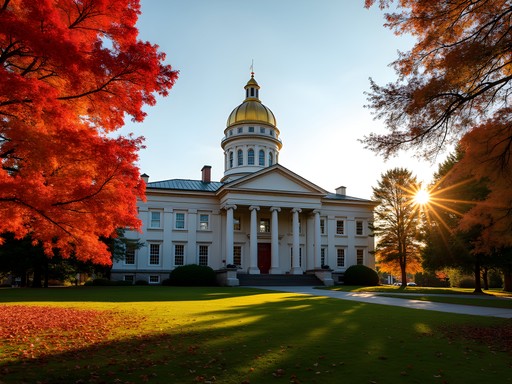
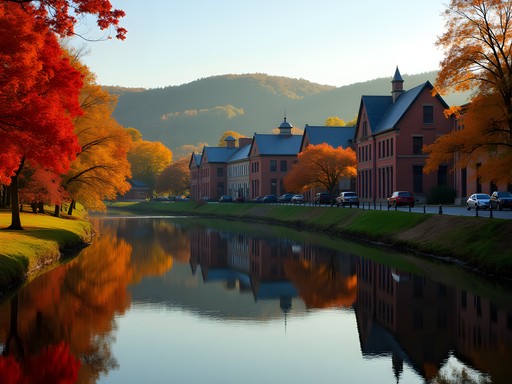

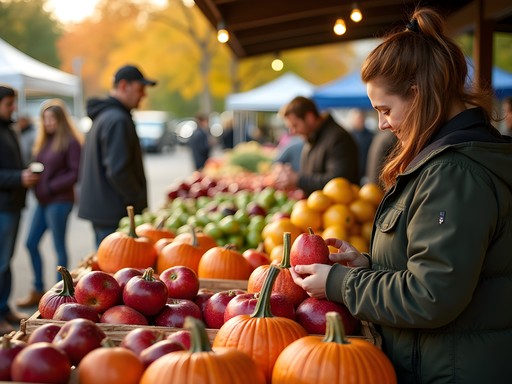
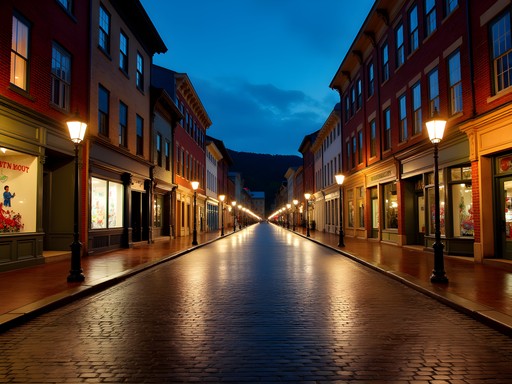


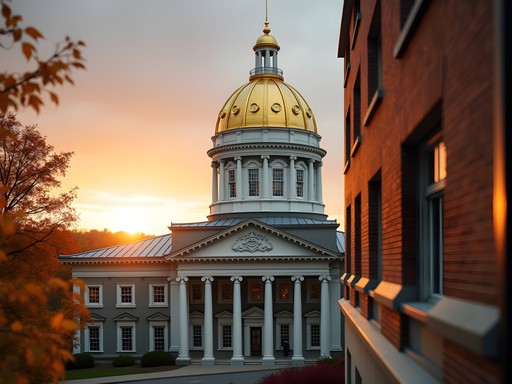
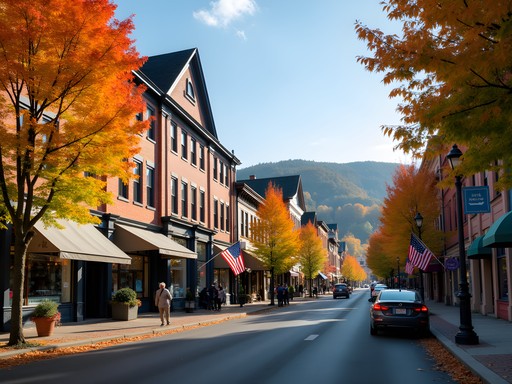
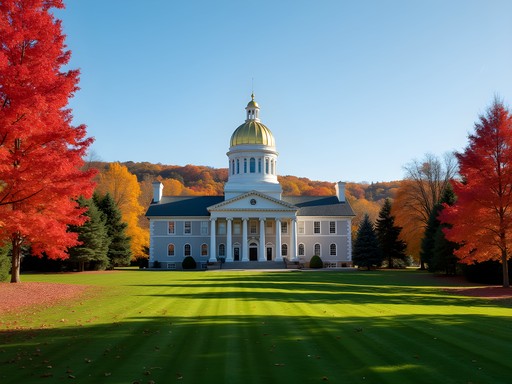





Comments
wanderwalker
Just got back from Montpelier and followed your guide to the letter, Evelyn! That tip about shooting the Capitol from the small garden across the street rather than the main lawn was *chef's kiss*. Got there at 6:15am and had the whole place to myself. Also discovered that Three Penny Taproom has amazing window light for food photography in the late afternoon. The bartender even let me move my plate around for better composition (after I promised to order another beer, haha). Vermont hospitality at its finest!
moonwalker
Those food shots from Three Penny on your IG are making me hungry! Did you try their cheese board?
wanderwalker
YES! Local cheeses with this amazing apple chutney. Worth every calorie!
wildgal
What lens would you recommend for capturing those architectural details? My kit lens always seems to miss the magic when I try detail shots.
Evelyn Rogers
For architectural details, I usually use a 24-70mm with good sharpness. The versatility helps when you're walking around. But honestly, even a nifty fifty (50mm prime) can work wonders if you're on a budget! It's more about finding interesting angles and good light.
wildgal
Perfect, I actually have a 50mm I rarely use. Will dust it off for my trip next month!
Oliver Duncan
Brilliant guide, Evelyn! I spent three days in Montpelier last year and completely missed those architectural details you highlighted. The carved elements on the smaller buildings are so easy to overlook. My favorite spot ended up being the bridge near Langdon Street at dusk - the way the lights reflect off the water creates these dreamy long exposures. I used my tripod which was perfect for the low light. For anyone visiting, don't miss Hubbard Park's tower either - it's a bit of a hike but offers a completely different perspective of the capital!
wintervibes
Planning to visit in October. Will the foliage make for good shots around the Winooski River spots you mentioned?
wanderwalker
October in Vermont is INCREDIBLE! I was there last fall and the reflections on the Winooski with all the red and orange leaves were postcard-perfect. Just be ready for crowds on weekends.
wintervibes
Thanks for the tip about crowds! Maybe I'll aim for weekdays then.
moonwalker
Those morning shots of the Capitol are absolutely stunning! The golden light really does make it magical. Definitely adding this to my photography bucket list!
Evelyn Rogers
Thanks moonwalker! That golden hour light between 6:30-7:30am in summer is pure magic. Worth the early wake-up call!
bluediver6754
Would winter be too challenging for photography there? I'm planning a January trip but worried about the cold affecting my camera. Any specific spots that look better in snow?
Ahmed Palmer
Winter photography in Montpelier is challenging but rewarding. Bring extra batteries (cold drains them quickly) and a microfiber cloth for lens condensation. State Street and the Capitol building look magnificent after fresh snow. The Winooski partially freezes, creating fascinating textures.
travelbug_amy
Those river reflection shots are stunning! 😍
vermont_local
If you're shooting the food scene, don't miss the Farmer's Market on Saturdays! So many colorful local products and interesting vendors to photograph. The lighting under the pavilion creates some challenges but the authenticity is worth it.
photo_enthusiast92
Love this post! What time exactly did you shoot the Capitol in that golden light? Planning a trip in October and want to catch similar lighting.
Evelyn Rogers
For October, I'd recommend getting there about 30 minutes after sunrise. The light hits the dome perfectly then! The visitor center opens at 8am if you want to do interior shots afterward.
photo_enthusiast92
Perfect, thanks so much!
Douglas Bradley
Excellent guide, Evelyn! I visited Montpelier last autumn and completely agree about the morning light on the Capitol dome - pure magic. One tip I'd add is to visit during foliage season when the Winooski River reflections become even more spectacular with the red and orange trees. The contrast between the historic architecture and the vibrant foliage creates striking compositions. I'd also recommend exploring Hubbard Park for some elevated views of the city. There's an old stone tower there that offers a unique vantage point for capturing the relationship between the capitol building and the surrounding landscape. I used my wide angle lens to capture both the tower in the foreground and the city below.
wanderseeker
Thanks for the Hubbard Park tip! Adding it to my list for next month's trip.
Venture X
Premium card with 2X miles, $300 travel credit, Priority Pass